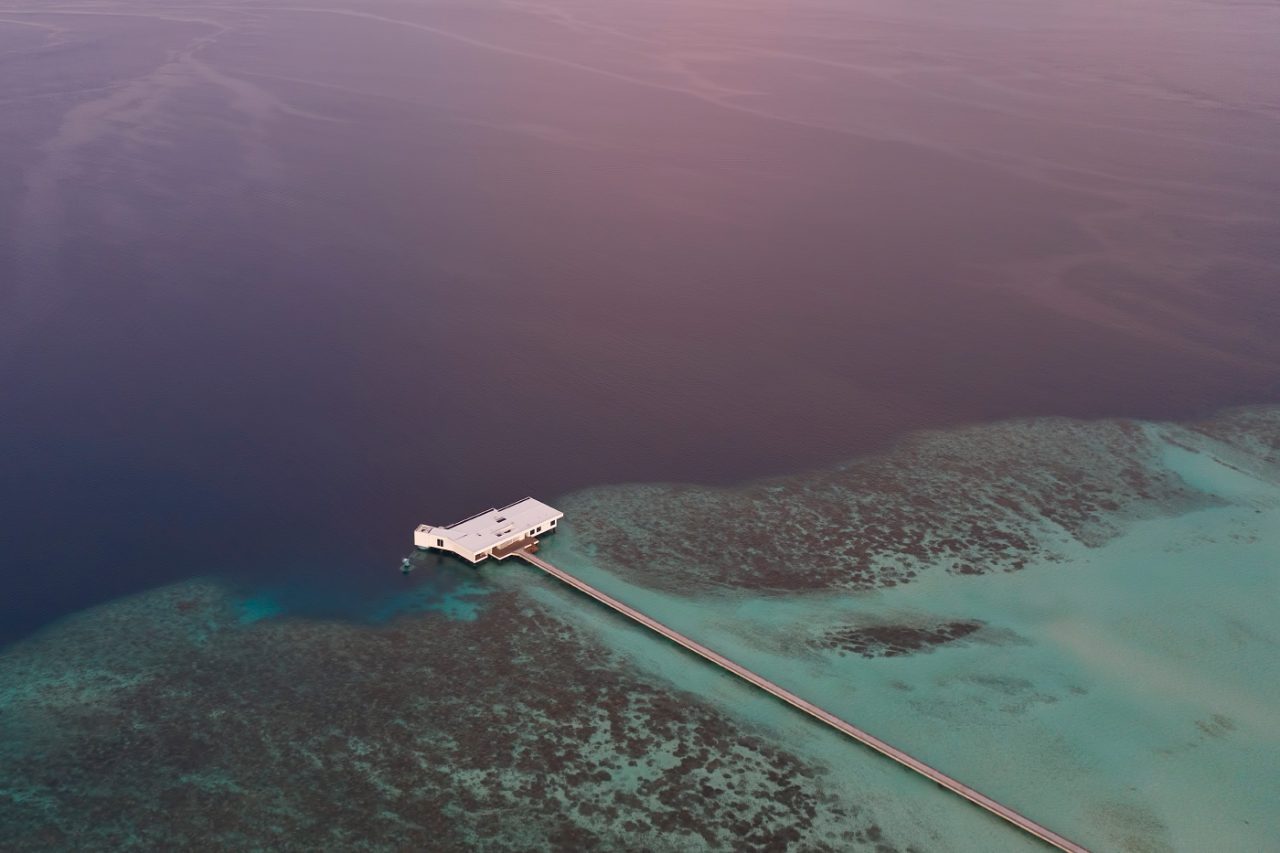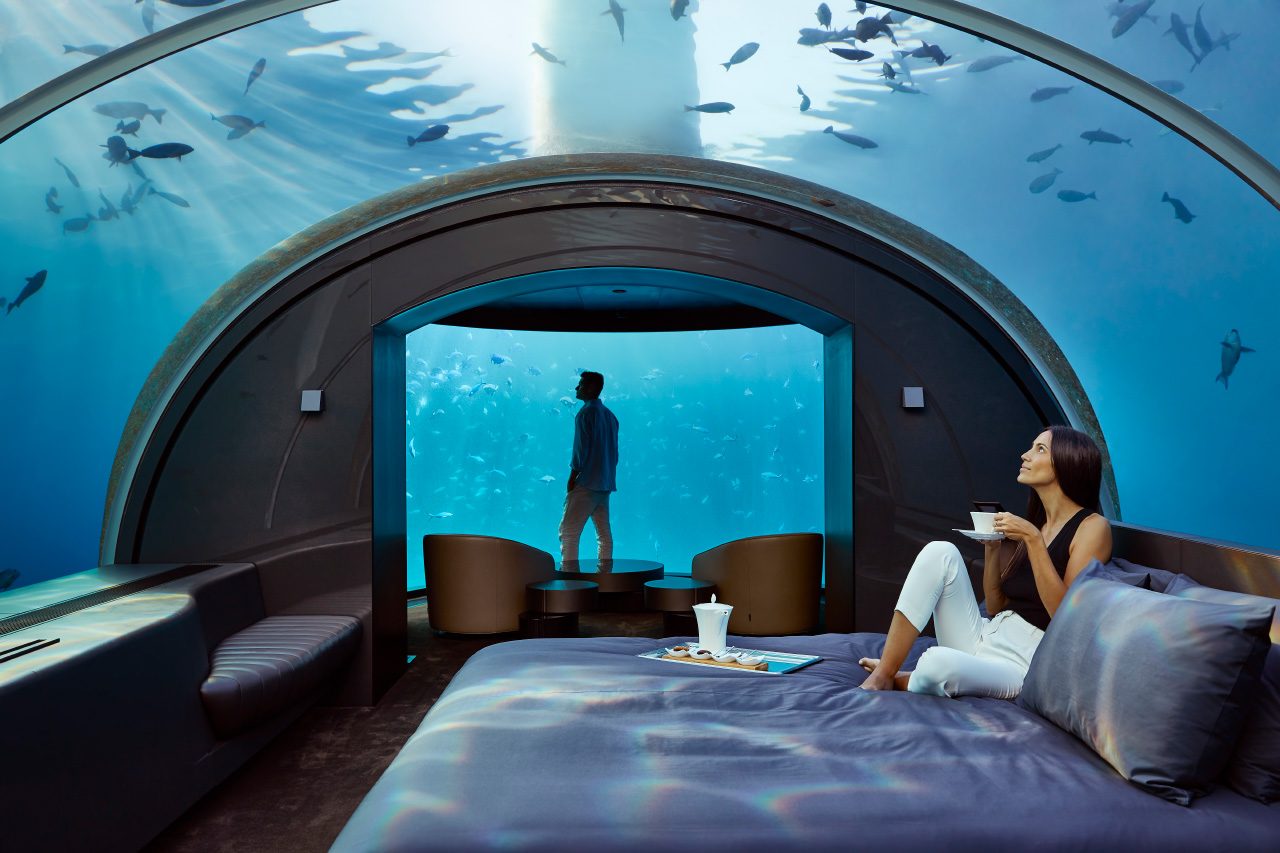The Conrad Maldives Rangali Island has officially announced the opening of the world’s first underwater hotel residence, a groundbreaking, two-story villa submerged more than 16 feet below sea level in the Indian Ocean. The deep-set dwelling, designed by Maldavian architect Ahmed Saleem with interiors by New York-based Yuji Yamazaki Architecture, is an ambitious display of architecture, design, and technology.

The villa is named The Muraka, which means “coral” in Dhivehi, the Maldives’ native language, for the way it rests on the ocean floor. The structure is composed of concrete, steel, and acrylic glass, with a spiral staircase and private elevator to aid guests in their descent below sea level. Once underwater, the structure’s glassy tunnels and see-through walls—made up of only a slender, acrylic dome—separate the spacious living quarters from the adjacent tropical reef.
Equipped with a private bar, butler’s quarters, gym, and infinity pool, the sunken retreat embraces luxury. The massive bed, shower, and bathtub in the underwater lower level have 180-degree, panoramic views of the ocean, and the top floor, which rests above the water, comprises a sprawling relaxation deck for tanning and unwinding.


The elaborate suite isn’t cheap. It is only available for a four-night, $200,000 vacation package, which includes a personal chef, private boat, and an automatic upgrade to Hilton Diamond status. In addition to The Muraka, the Conrad hotel is home to Ithaa, a five-star undersea restaurant which opened in 2005.
The construction of The Muraka was both innovative and environmentally conscious. Each piece of the 600-ton lower level was built in Singapore and then transported to the Maldives via a specialized ship before being plunged underwater and anchored firmly in place using ten concrete pilings. The sturdy pilings ensure that the villa does not shift or downright float away amid high tides or rough waves. The acrylic enclosing the lower level was supplied by Nippura Co., a Japanese aquarium manufacturer, and sealed with Shin Etsu Marine sealant. The architect also opted to work with a team of marine biologists to guarantee that the sprawling villa would not disturb the surrounding seabed, including the coral from which it derives its name.

For travelers who aren’t brave enough to spend four nights in the depths of the Indian Ocean, the Conrad also boasts a number of luxury villas that sit on stilts above the water.
